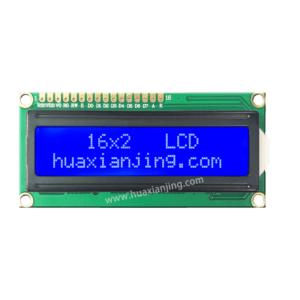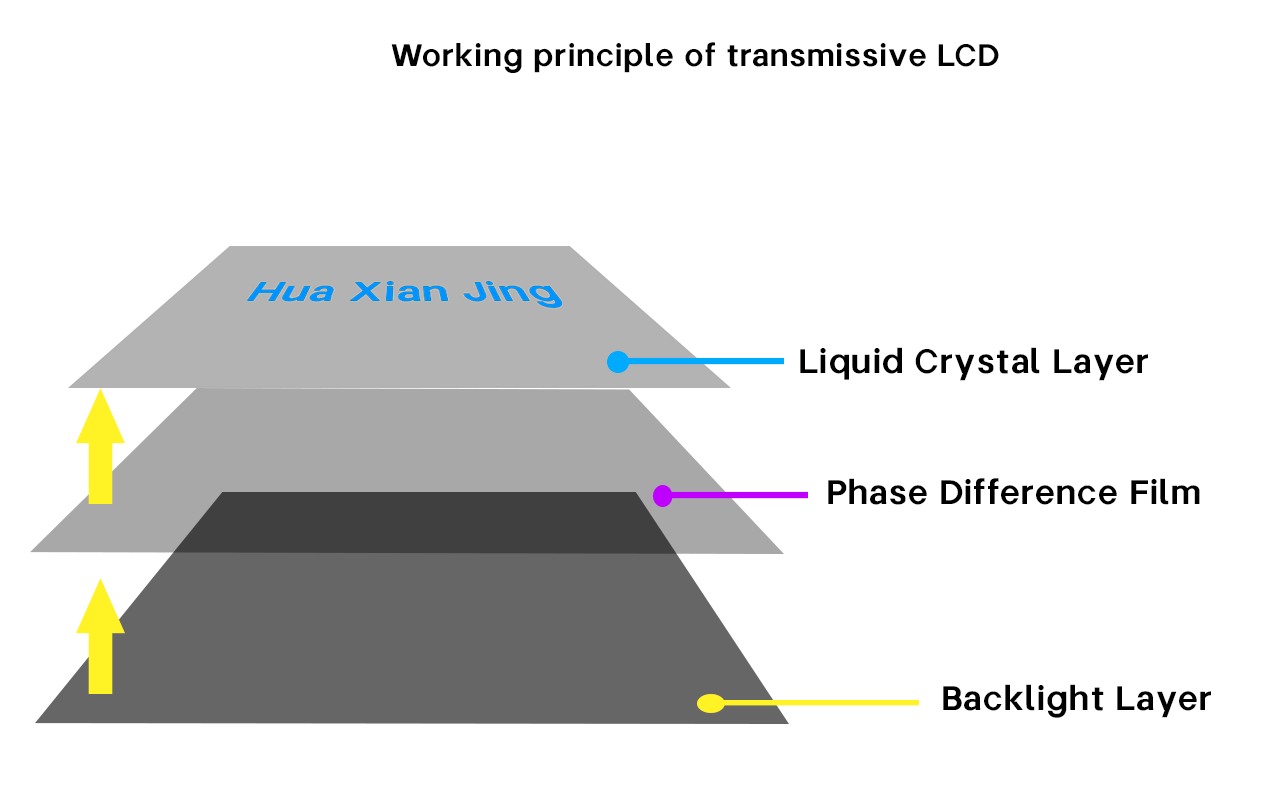Monochrome LCD displays are a type of liquid crystal display that can only show content in a single color. The most common colors used in these displays are gray, blue, and yellow-green. Monochrome LCD screens are simple but highly effective for devices where clear, high-contrast displays are essential. These screens are primarily found in industrial instruments, home appliances, and handheld devices.
Notes:
In this comprehensive guide, we’ll break down everything you need to know about monochrome LCD displays, including their types, technology, and applications.
1. What is a Monochrome LCD Display?
A monochrome LCD display refers to an LCD that can display content in only one font color. The most common types are gray, blue, and yellow-green LCDs. In these simple LCD modules, the screen color is determined by the optics compensating film, and the font color must contrast sharply with the background to ensure readability.
Types of Monochrome LCD Displays
A monochrome LCD display refers to an LCD that can display content in only one font color. The most common types are gray, blue, and yellow-green LCDs. In these simple LCD modules, the screen color is determined by the phase difference film, and the font color must contrast sharply with the background to ensure readability.
1. Packaging Structure of Monochrome LCDs
The two most common types of packaging structures are COB (Chip on Board) and COG (Chip on Glass).
1.1 COB Monochrome LCD

COB (Chip on Board) uses a PCB as the base. Compared to COG, it is less advantageous in terms of volume, space, and cost. However, due to the stability of the COB’s traditional structure, COB LCDs excel in impact resistance and durability. Thus, they are commonly used in industrial instruments and equipment.
1.2 COG Monochrome LCD

COG (Chip on Glass) integrates circuits and chips directly onto a glass plate, which offers superior performance in terms of size and power consumption. As a result, COG structures, often found in simple, easy-to-read segment code LCDs, are the most popular in the current monochrome LCD market. These are frequently used in devices like electric bicycle meters and handheld instruments such as multimeters.
2. Display Technology of Monochrome LCDs



Monochrome LCDs are further classified based on how they display content, particularly in their use of backlighting and external light sources. There are three main types: transmissive, reflective, and transflective.
2.1 Transmissive Monochrome LCD

A transmissive LCD operates by using a backlight to illuminate the display. Since LCDs do not emit light on their own, an LED backlight is necessary. If the backlight is strong enough, the display remains readable even in direct sunlight. However, this increases power consumption, which is why transmissive LCDs are typically used in indoor electrical appliances.
2.2 Reflective Monochrome LCD

A reflective LCD, unlike transmissive LCDs, relies on external light sources, using a reflective layer that reflects ambient light back to the LCD. This design eliminates the need for a backlight, reducing power consumption, which allows reflective LCDs to run on battery power. However, they require strong external lighting and have limited viewing angles. Reflective LCDs are mostly used in outdoor environments, such as signage.
2.3 Transflective Monochrome LCD

The transflective LCD combines both a backlight and a reflective layer. The reflective layer is translucent on one side and reflective on the other. In low-light indoor environments, the backlight illuminates the LCD, functioning like a transmissive display. In bright outdoor environments, ambient light is reflected by the reflective layer, functioning as a reflective display. This dual capability makes transflective LCDs ideal for handheld devices due to their versatility and low power consumption.
3. Display Modes in Monochrome LCDs
Monochrome LCDs also vary in their display modes, which affect how the background and text are rendered. There are two primary modes: positive and negative.
3.1 Positive Mode Monochrome LCD

In a positive display, the background is light, and the content is dark, such as black text on a yellow-green or gray background. Positive display LCDs perform well under sunlight without color distortion and remain easy to read in low-light environments, making them a popular choice for various monochrome displays.
3.2 Negative Mode Monochrome LCD

Negative mode LCDs use a dark background with light-colored text. Examples include blue, red, or orange backgrounds with white text. These displays rely on backlighting, making them less suitable for outdoor use. Negative mode LCDs are generally used in indoor products, such as battery displays, digital scales, and thermometers where ambient light is low, and a backlight is required for visibility.
Notes:
VA (vertical alignment) LCD is a special negative display LCD with a black background and white (or other colors) content. VA LCD, like segment code LCD, needs to be specially customized by LCD manufacturers for customers.
4. Display Methods in Monochrome LCDs
Monochrome LCDs also differ in their display methods. The two main methods are passive matrix (dot matrix) and segment displays.
4.1 Passive Matrix (Dot Matrix) Monochrome LCD

A passive dot matrix LCD operates by addressing each pixel individually, scanning both horizontally and vertically. This method works well for small screens, but as screen size increases, it becomes more prone to errors and inefficiency.
4.2 Segment Monochrome LCD

Segment LCDs work differently, displaying content by illuminating predefined segments created by the LCD manufacturer. Each segment code LCD is typically customized for specific customer needs.
Summary: Why Monochrome LCD Displays Still Matter
While monochrome LCD technology is not new, it remains ideal for products where the display is secondary to the device’s core functionality, such as home appliances and industrial instruments. In these cases, the LCD primarily enhances user experience rather than being the focal point of the product.
FAQs: Monochrome and Color Display Technologies
1. What is the difference between COG, COF, and COP?
COG (Chip on Glass) technology is very mature and cost-effective, making it widely used. On the other hand, COF (Chip on Film) and COP (Chip on Plastic) technologies are still expensive to produce, which limits their widespread adoption. Currently, COF and COP are mainly used in high-end products like smartphones.
2. How do color and monochrome displays form colors?
COG technology is mature and cost-effective, while COF and COP technologies are more expensive and currently limited to high-end devices like smartphones.
3. What is the difference between a monochrome LCD and a monochrome OLED?
A common misconception is that PMOLED can only display monochrome. PMOLED displays, which also use COG structure, are self-luminous and capable of displaying pure black. However, their lifespan is shorter compared to COG monochrome LCDs.





